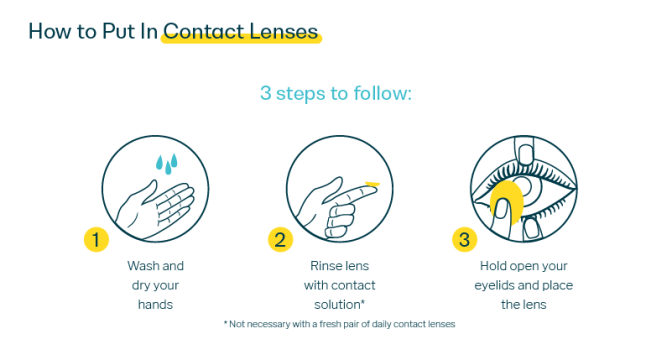Buy one pair of eyeglasses, get a second pair 50% off!
*Restrictions apply. Click here for details.
How To Put In Contacts Safely
It’s no wonder that over 45 million Americans¹ wear contacts: these lenses come with big benefits despite their small size. Unlike glasses, contact lenses don't crack or slip down your nose – while providing a wider field of view for better vision.
At first, putting your contacts in and taking them out can be a scary task. Luckily, Nationwide Vision has this quick guide to help beginner contact lens wearers. Continue reading to learn more.
Putting In Contact Lenses
When handled properly, contact lenses can be a wonderful and convenient way to correct your vision. Follow these steps to insert contacts successfully.

A Step-by-Step Guide For Putting In Contact Lenses
How To Know If Your Contacts Are In Correctly
If you happen to put your contact on the incorrect side, you will experience slight discomfort. The contact may even fall out of your eye. You'll know when your lens is centered correctly when it feels comfortable on your eye. Some days, you might have to opt to wear glasses. If contacts were worn too long the previous day, or your eyes are strained, it may be painful to put your contacts in. There are some contacts specially formulated for dry eyes, so talk to your eye doctor if you notice persistent dry eye.
Think You May Need Contacts?

Schedule a comprehensive eye exam today at Nationwide Vision to discuss your vision problems with a skilled eye care professional. Find a location near you.
